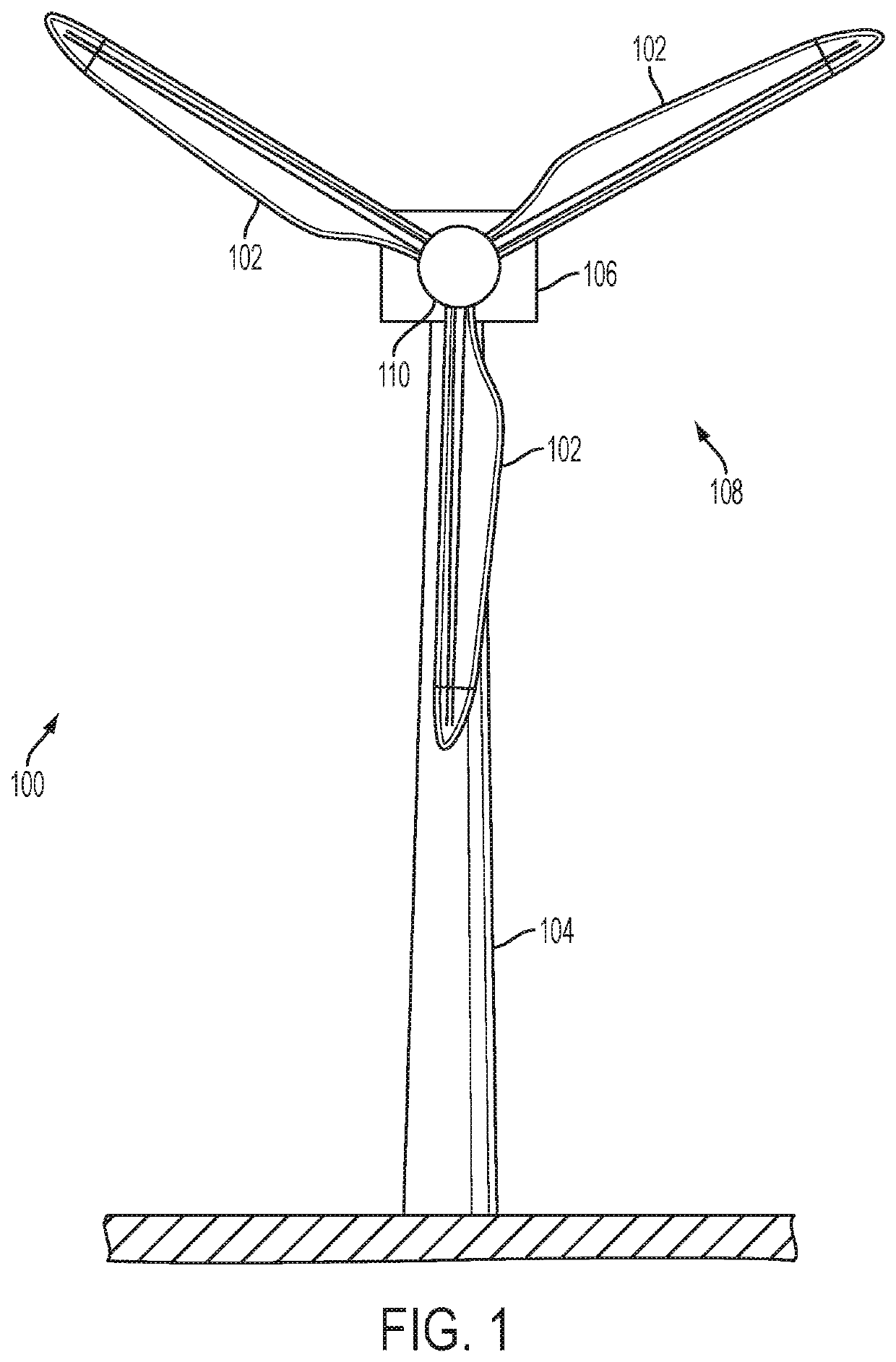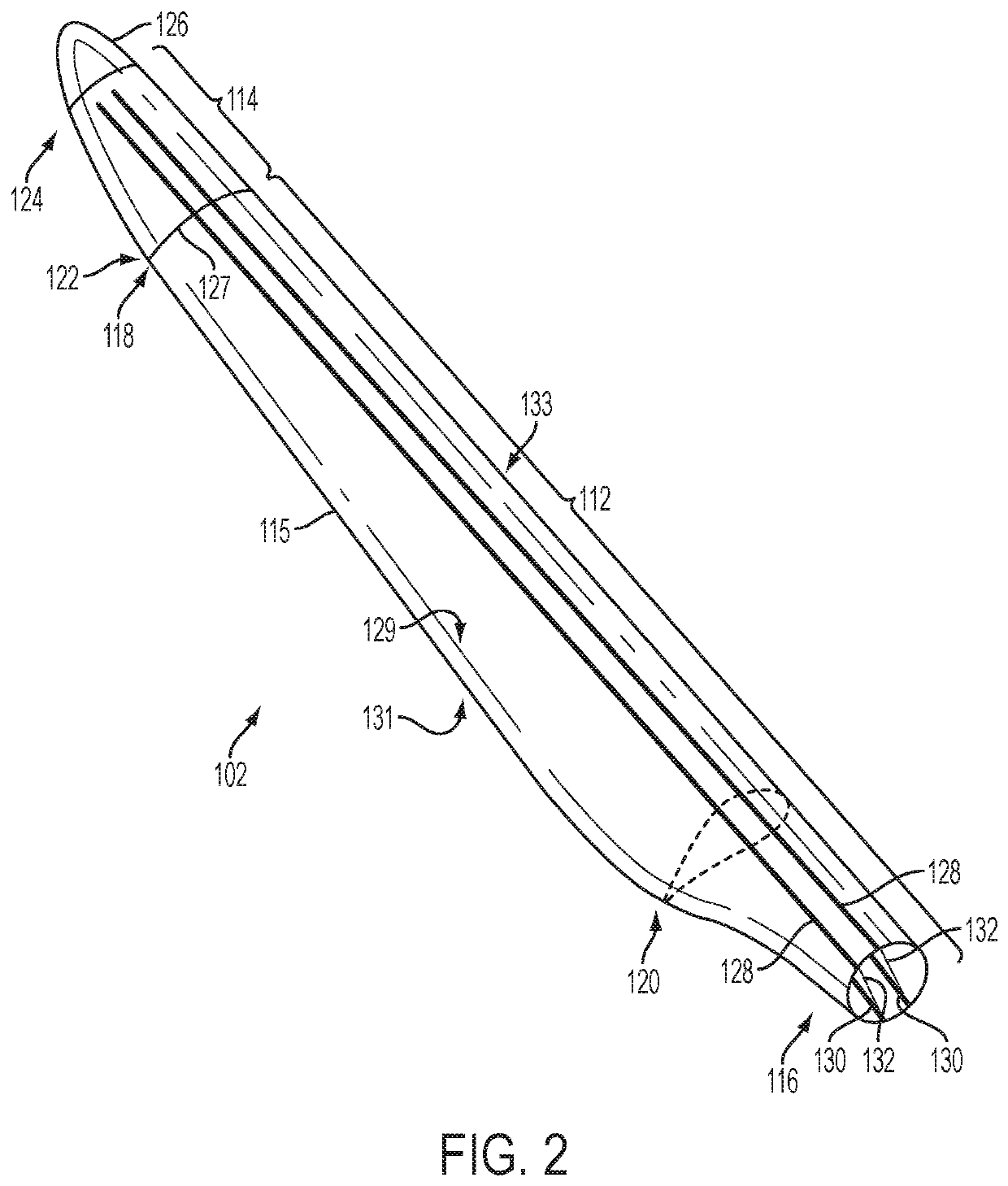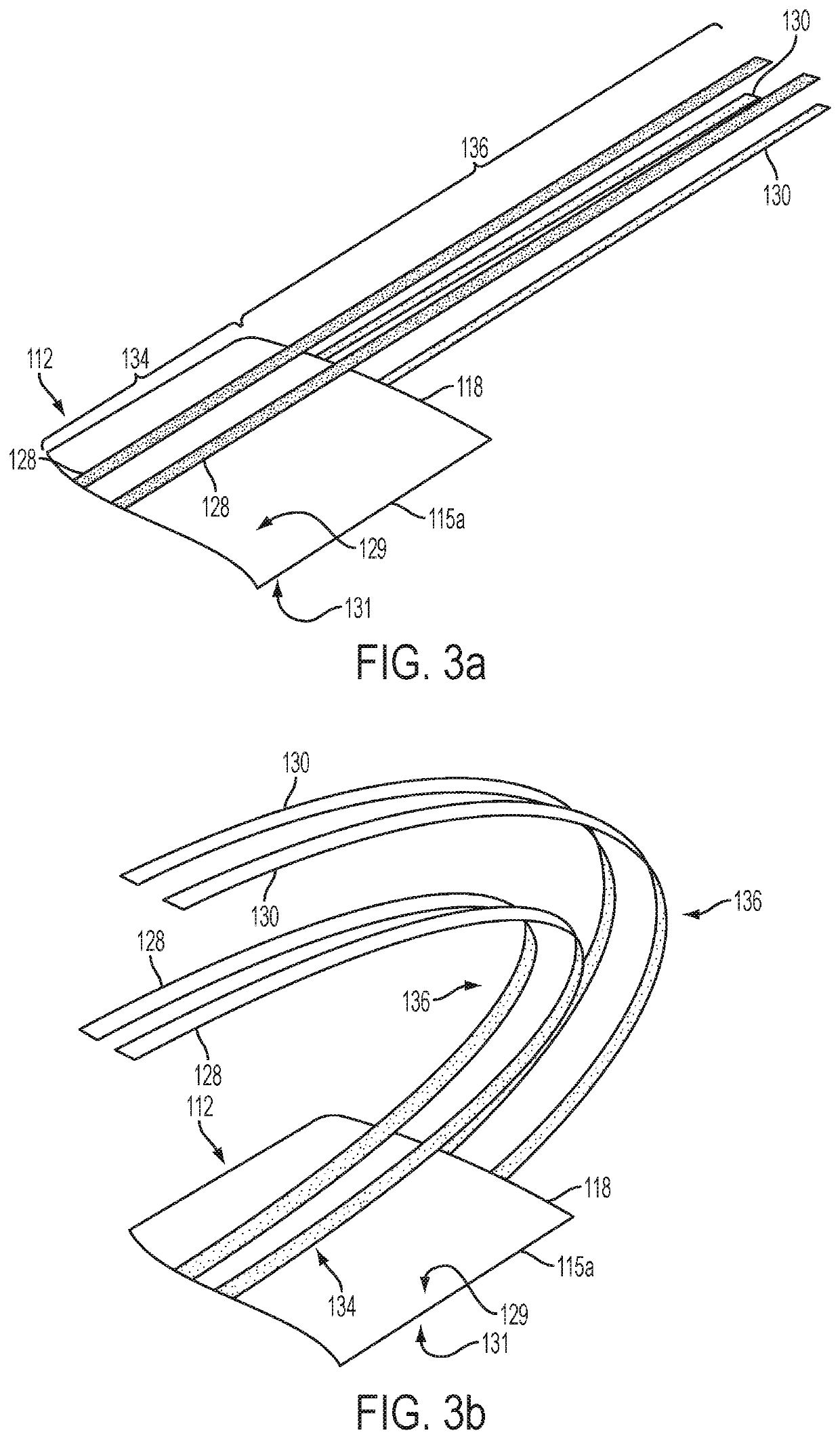Modular wind turbine rotor blade
a wind turbine and module technology, applied in the direction of wind motors, wind motors with parallel air flow, motors, etc., can solve the problems of large components, difficult to access, and long rotor blades, and achieve the effect of facilitating blade assembly and simple lamina
- Summary
- Abstract
- Description
- Claims
- Application Information
AI Technical Summary
Benefits of technology
Problems solved by technology
Method used
Image
Examples
Embodiment Construction
[0051]FIG. 1 shows a wind turbine 100 comprising three modular rotor blades 102 according to an embodiment of the invention. The wind turbine 100 comprises a tower 104 on which a nacelle 106 is supported. A rotor 108 is mounted to the front of the nacelle 106. The rotor 108 is operatively connected to a generator located inside the nacelle 106. The rotor 108 comprises a hub 110 on which the modular rotor blades 102 are mounted. The modular rotor blades 102 extend radially outward from the hub 110 and are equally spaced about a circular circumference of the hub 110.
[0052]FIG. 2 shows a modular rotor blade 102 of the wind turbine 100 in more detail. The modular rotor blade 102 comprises an inboard blade module 112 and an outboard blade module 114. Each module 112, 114 comprises a substantially hollow outer shell 115 made primarily of glass-fibre reinforced plastic material.
[0053]The inboard module 112 extends in a longitudinal or spanwise direction between a root end 116 and an interf...
PUM
 Login to View More
Login to View More Abstract
Description
Claims
Application Information
 Login to View More
Login to View More - R&D
- Intellectual Property
- Life Sciences
- Materials
- Tech Scout
- Unparalleled Data Quality
- Higher Quality Content
- 60% Fewer Hallucinations
Browse by: Latest US Patents, China's latest patents, Technical Efficacy Thesaurus, Application Domain, Technology Topic, Popular Technical Reports.
© 2025 PatSnap. All rights reserved.Legal|Privacy policy|Modern Slavery Act Transparency Statement|Sitemap|About US| Contact US: help@patsnap.com



